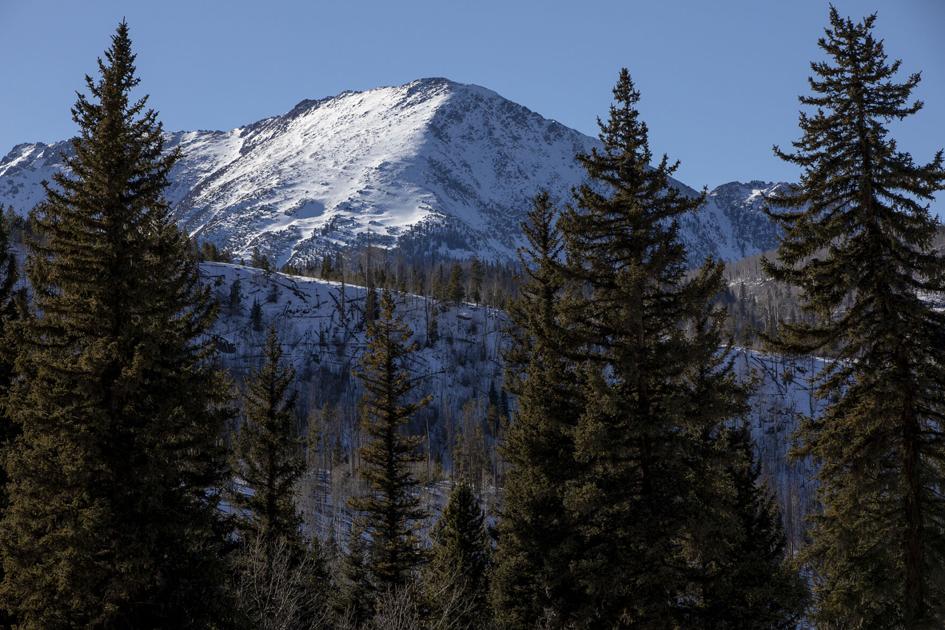Despite recent welcome snowfall, the long-term outlook for Colorado’s winter is bleak following a dry summer and record-setting fires across the state.
The National Oceanic and Atmospheric Administration is calling for drought conditions across the state to persist and possibly worsen into next year as a La Niña weather pattern brings above-normal temperatures and dry conditions to the southwestern U.S., said David Miskus, a meteorologist with the Climate Prediction Center.
The entire state is already seeing drought conditions, with more than two-thirds in extreme or exceptional drought. Most of El Paso County is in extreme drought, according to the U.S. Drought Monitor.
To help prepare, Colorado has activated its municipal emergency drought plan for only the second time in history as several cities say they need to prepare for what is almost certainly going to be a dangerously dry 2021.
For Colorado Springs Utilities, activating the drought plan means increasing its communication between other major water users about water storage, future water supplies, and operational plans, said Patrick Wells, general manager with Colorado Springs Utilities Water Resources and Demand Management.
Colorado Springs maintains about three years worth of water storage for the city and that is the community’s primary buffer during dry times, he said.
Planning for drought and water supply in the state is becoming harder as supply becomes increasingly variable, Wells and other experts said.
“We have seen frequently in these last couple of droughts the conditions can change pretty rapidly from fairly wet to fairly dry to extremely dry,” he said.
For example, last winter’s snowfall was fairly strong across the state and, on April 1, the snowpack for the upper Colorado River Basin had reached 100% of average. But the basin saw only 52% of normal runoff when experts would have expected to see much, much more water, said Brad Udall, senior water and climate research scientist at the Colorado Water Institute at Colorado State University.
Colorado Springs relies heavily on water from the Colorado River basin.
Water in the Colorado basin was likely lost to thirsty soils because the fall of 2019 was so dry and some water likely evaporated in the warm spring temperatures, he said.
“It’s not typical, but it could very well be our future,” Udall said.
For water users along the lower Arkansas River, in counties like Pueblo and Otero, the runoff from the 2020 snowpack came fast along with higher temperatures that drove evaporation, said Jay Winner, general manager of the Lower Arkansas Valley Water Conservancy District.
“It was a very, very strange year with water,” he said.
But, he agrees with Udall, that higher temperatures and lower flows could be the new normal. Lakes east of Pueblo are seeing 50% of their capacity lost to evaporation and that could go up, he said. So projects to preserve water in the system need to get underway to help deal with it, he said.
“We are still managing water like we did 50 years ago,” Winner said.
Lining ditches and ponds can help more water reach the fields and once it gets there, center-pivot sprinkler systems and drip irrigation can also help farms water more efficiently, he said.
At Echo Canyon River Expeditions in Cañon City, staff was also surprised that the Arkansas did not rise to more normal flows this year and that it dropped off fairly fast, said Ben Sacks, general manager. However, the dam at Twin Lakes kept water in the river through the middle of August during a strong outdoor tourist season, he said.
“We really can’t complain,” he said.
The company can manage in low-flow years, by putting fewer tourists in each raft to keep them nimble, he said. But drought also contributes to the risk of wildfire, which is a much bigger threat to tourism, he said.
The state expects water conservation and efficiency to be a big part of managing water demands in the future and, this year, Colorado Springs adopted permanent outdoor watering restrictions for the first time in January.
Colorado Springs Utilities considers the first year a success with 500 acre feet of water saved, Wells said. An acre foot of water is 326,000 gallons, or the amount of water it takes to cover an acre in a foot of water.
The rules limit outdoor watering to three days a week and prohibit water during the heat of the day from 10 a.m. to 6 p.m. from May 1 to Oct. 15.
In the first year of the restrictions, Utilities focused on educating the public, while, next year, more enforcement is planned, Wells said. Residents could be fined $100 after they have been flagged twice about violations, Utilities said previously.
“Really, what we’re trying to do is instill a new long-term water conservation ethic,” he said.
Fresh Water News contributed to this story.
This content was originally published here.

